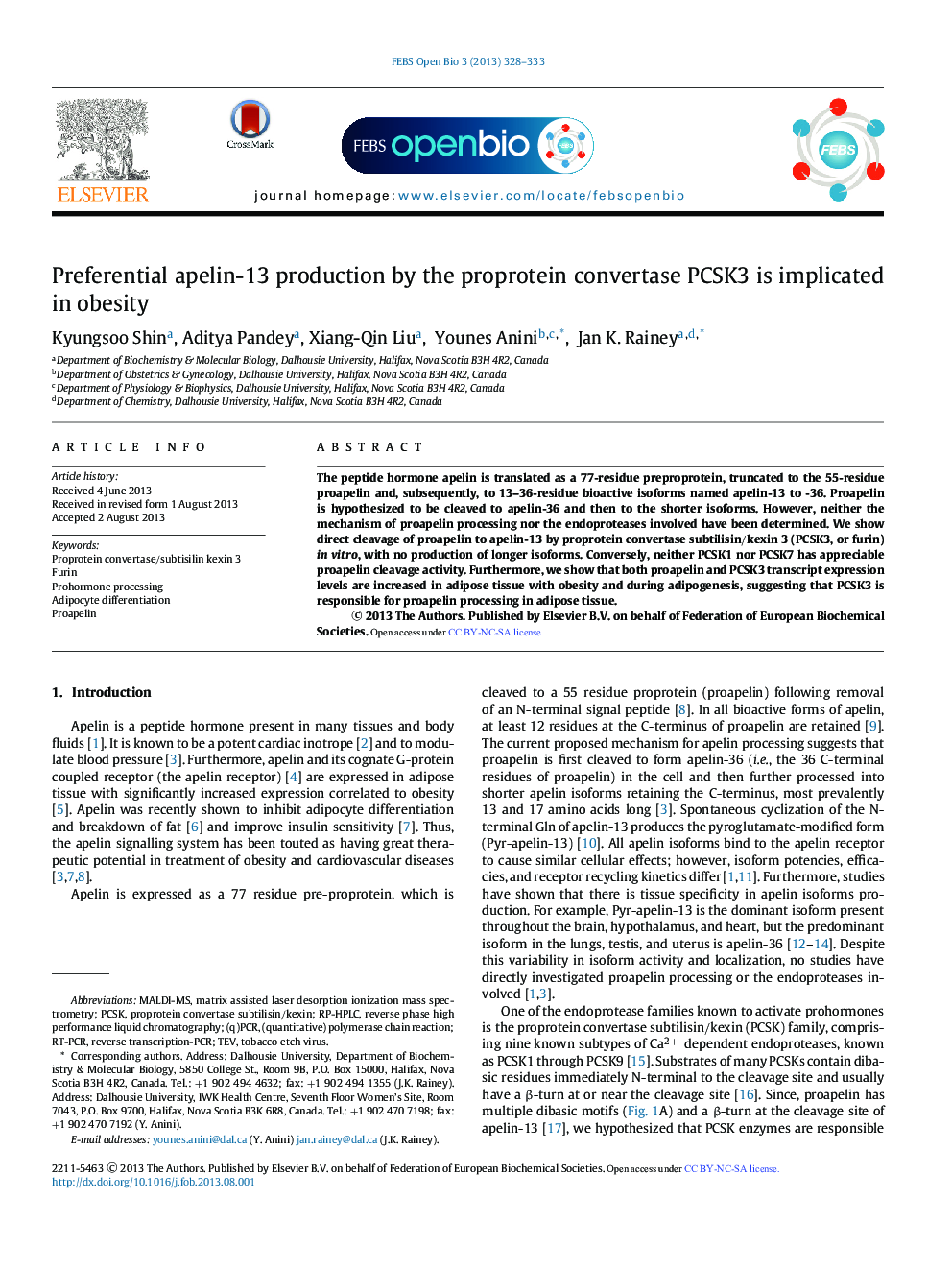| Article ID | Journal | Published Year | Pages | File Type |
|---|---|---|---|---|
| 1981803 | FEBS Open Bio | 2013 | 6 Pages |
•No prohormone processing mechanisms have yet been shown for apelin.•Proapelin is cleaved into apelin-13 both specifically and preferentially by PCSK3.•Conversely, PCSK1 and PCSK7 do not cleave proapelin.•PCSK3 and apelin expression increase with adipocyte differentiation and obesity.•We show the first evidence of and propose a new theory for apelin bioactivation.
The peptide hormone apelin is translated as a 77-residue preproprotein, truncated to the 55-residue proapelin and, subsequently, to 13–36-residue bioactive isoforms named apelin-13 to -36. Proapelin is hypothesized to be cleaved to apelin-36 and then to the shorter isoforms. However, neither the mechanism of proapelin processing nor the endoproteases involved have been determined. We show direct cleavage of proapelin to apelin-13 by proprotein convertase subtilisin/kexin 3 (PCSK3, or furin) in vitro, with no production of longer isoforms. Conversely, neither PCSK1 nor PCSK7 has appreciable proapelin cleavage activity. Furthermore, we show that both proapelin and PCSK3 transcript expression levels are increased in adipose tissue with obesity and during adipogenesis, suggesting that PCSK3 is responsible for proapelin processing in adipose tissue.
Graphical abstractFigure optionsDownload full-size imageDownload as PowerPoint slide
